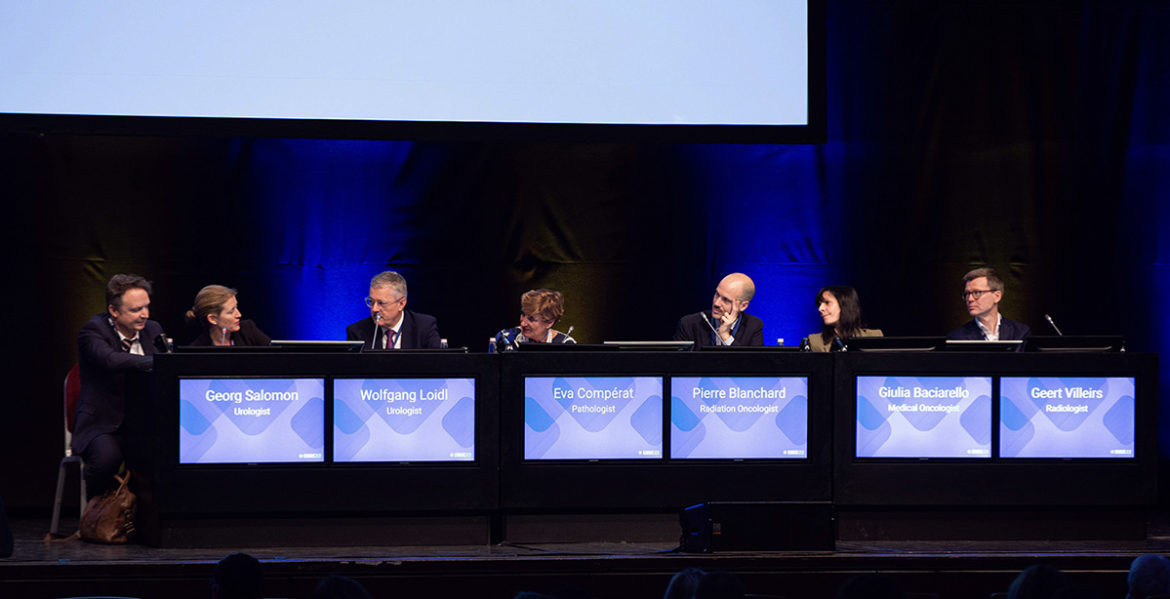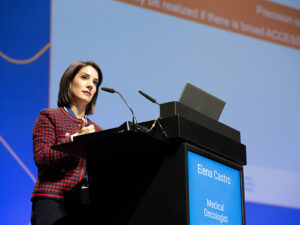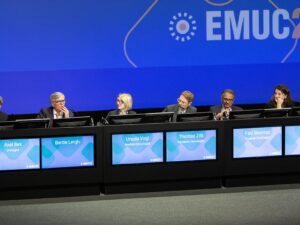Throughout the years, the European Multidisciplinary Congress on Urological Cancers (EMUC) has garnered a loyal following and a steady growth in popularity. At the core of the congress is the EMUC constant and fundamental: the synergy of specialties.
As always, the scientific programme of the upcoming 15th edition (EMUC23) will reflect the interdisciplinary approach in the treatment of genitourinary (GU) cancers but will have new features. This article offers information on the latter, the value of a multidisciplinary team (MDT), and viewpoints from some of the distinguished members of the EMUC Steering and Scientific Committees.
New and improved programme
To further solidify the multidisciplinary nature of the congress, the meeting of EAU Section of Urological Imaging (ESUI) will merge with the congress. Crucial updates such as the latest evidence in imaging trials and their clinical implications; unmet needs in uro-oncology imaging; other imaging modalities, and more will kickstart EMUC23 on 2 November 2023.
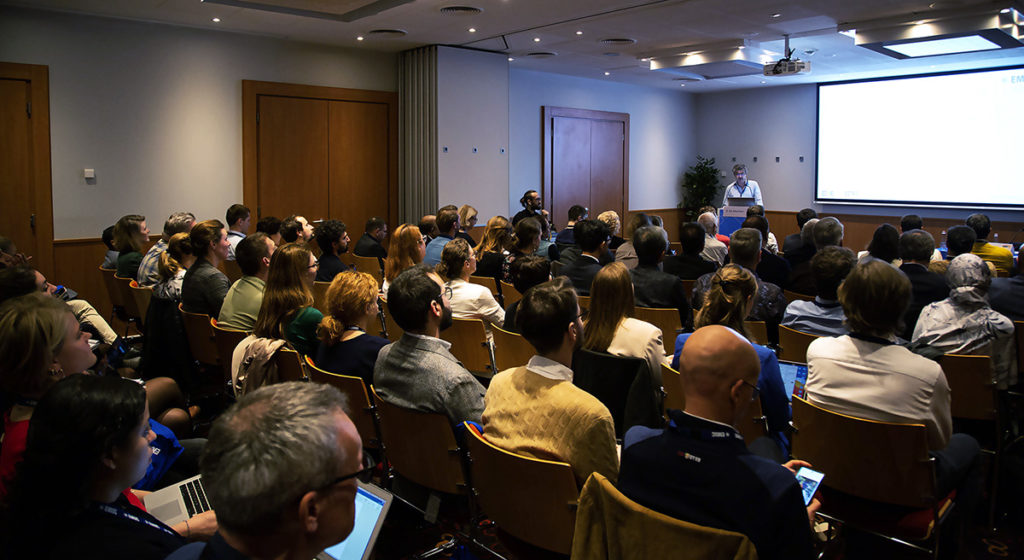
The ESUI meeting will merge with this year’s EMUC23 programme.
In addition, one of the most popular features of the scientific programme, the Multidisciplinary Case Discussions, will be more data-driven, infused with robust statistics, and delivered in an improved structured format.
To enrich the EMUC23 experience, the exhibition will also be a must-visit element of the congress showcasing innovations in equipment, scientific publishing, and pharmaceuticals.
EMUC23 and nuclear medicine
Prof. Daniela Oprea-Lager (NL) stated that attending EMUC23 will not only be beneficial to her fellow nuclear medicine physicians, but to other healthcare professionals as well. “The congress will deliver novel developments from the preclinical to the clinical levels of interest. EMUC23 will be a platform where various perspectives are offered and topics on imaging are adequately integrated during the patient case discussions. Experts from diverse fields will brainstorm and deliberate to improve clinical practice and to avoid futile treatments in categories of patients who might not respond to therapy.”
Prof. Oprea-Lager shared that her favourite EMUC sessions are the Multidisciplinary Case Discussions and Game Changing sessions, where interdisciplinary collaboration will be at its pinnacle. She said, “Generally, there are various possibilities when treating certain patients. The key is selecting the most appropriate approach, capitalising the benefit, and minimising the adverse effects and costs.”
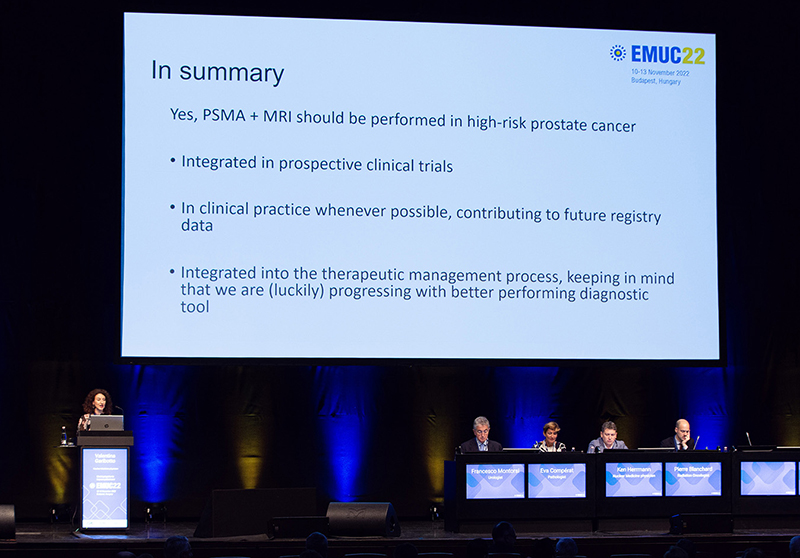
During EMUC22, nuclear medicine physician Prof. V. Garibotto (CH) deliberates why PSMA + MRI should guide treatment algorithm in high-risk prostate cancer.
Role in the MDT
“With the implementation of next-generation imaging and the theragnostic concept in clinical practice, the tasks of the imaging doctor became complex. We see what we treat and we treat what we see, but the aims are to position the patient centrally and to act from an individualised perspective,” she said. According to Prof. Oprea-Lager, this is how to carry out these aims:
-
-
-
- Speak the same language with clinical partners
“Imaging doctors, nuclear medicine physicians, and radiologists, need to have the knowledge and high level of expertise to function as equal discussion partners.” - Identify the gaps in daily practice
“Push the limitations and innovate towards answering clinical needs by using imaging tools.” - Be aware of the consequences of “seeing more and treating more”
“Nowadays when we see more, we may upstage/downstage disease and change the initially proposed treatment plan for a still unknown survival benefit. However, the nuclear medicine physician has to possess a good understanding of all factors related to disease history, current medical status, metastatic patterns of urological cancers, pitfalls, and final image interpretation. Once we have these, we can adequately stage/re-stage patients and plan the optimal treatment in dialogue with the clinicians in the MDT and with the patient.” - Adequately select and identify the ideal candidates (i.e. patient categories that may benefit from the proposed treatment)
“Patient selection and response evaluation criteria based on harmonised, repeatable protocols, and adequately performed scans are some of the most challenging tasks of the new-generation imaging doctors.”
- Speak the same language with clinical partners
-
-
Solving dilemmas together
According to Prof. Oprea-Lager, MDT has been implemented in the Netherlands for more than 10 years. However, the presence of radiologists and nuclear medicine physicians in the MDT is a novel element. She explained, “It all began with the need to have all key specialties present in the multidisciplinary process of diagnosis and treatment of patients with urological cancers. Nowadays, specialist diversity is a matter of shared decisions and best-practices approach within the large uro-oncology domain. We are not competing with other disciplines; we try to solve dilemmas together, and successfully translate anatomic and metabolic knowledge into the clinical pathways.”
EMUC23 and medical oncology
“We, medical oncologists, generally focus on advanced disease. Most scientific meetings have sessions that only cover this topic and topics related to it. In contrast, EMUC provides updates and knowledge exchange on various stages of GU cancers. It is during the early stages that plenty of evidence is generated. This can change or will change clinical practice. With this in mind, it is in the best interest of our patients to keep ourselves updated and EMUC can help with that,” said Dr. Elena Castro (ES).
Advantages of MDT
According to Dr. Castro, when the management of GU tumours becomes increasingly complex due to multiple treatment options, a well-coordinated MDT is paramount in pinpointing the most appropriate disease management. She explained, “This is especially true in patient cases with particularities that have more than one potential option and/or when the Guidelines do not currently offer clear recommendations. I personally find MDT discussions very helpful in coming up with the best care possible as the decision is not based on one person’s point of view. Additionally, MDTs are essential in identifying candidates suited for clinical trials as they could benefit from treatments not yet widely available.”
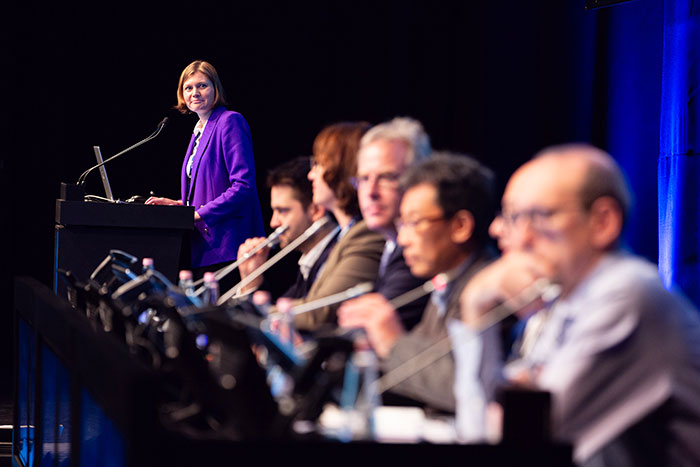
Urologist Dr. T. Kuusk (GB) presents a case on adjuvant treatments and recurrent disease during the Multidisciplinary Case Discussion session on kidney cancer at last year’s EMUC.
Dr. Castro shared that in her practice, most GU patients with localised disease who benefit from localised treatment or even surveillance, are usually managed by urologists or radiation oncologists. However, there are some cases that may require neoadjuvant or adjuvant systemic treatment. Thus, coordination between surgeons and medical oncologists is key.
Patients with (recurrent) metastatic disease are usually referred to the medical oncologist. Concerning prostate cancer, some patients with metastatic disease are managed by urologists or radiation oncologists. These patients are then referred to the medical oncologists after progression to the initial therapy or if the most appropriate treatment requires chemotherapy or other systemic treatments.
Spain’s take on MDT
“If not in all, in most tertiary hospitals in Spain, MDTs are the common way to manage cancer patients for GU tumours and most tumours. The composition of the MDTs may vary depending on the specialists that are relevant for a particular tumour type, but MDTs typically include surgeons, medical oncologists, radiation oncologists, pathologists, and radiologists. For instance, for prostate cancer, it is important that the nuclear medicine specialists are also involved,” stated Dr. Castro.
MDT becoming compulsory?
According to EAU Secretary General and EMUC Steering Committee member, Prof. Arnulf Stenzl (AT), an MDT’s involvement in treating onco-urology patients may become imperative in health insurance matters. He stated, “We see insurance companies and authorities in several countries require that onco-urology patients must be seen by a multidisciplinary tumour board to receive reimbursements for a systemic (or new interventional) treatment or diagnosis such as PSMA-related diagnosis or treatment. It would be beneficial if medical specialists become more informed in many aspects of GU cancer treatment beyond the scope of their core specialism.”
| Join us at EMUC23 |
| EMUC23 is an all-encompassing congress designed to enrich your clinical practice and patient care. Explore the congress’ scientific programme to know what’s in store for you. Secure your place at EMUC23 and register now to benefit from the early-fee rates. Don’t miss out! |

